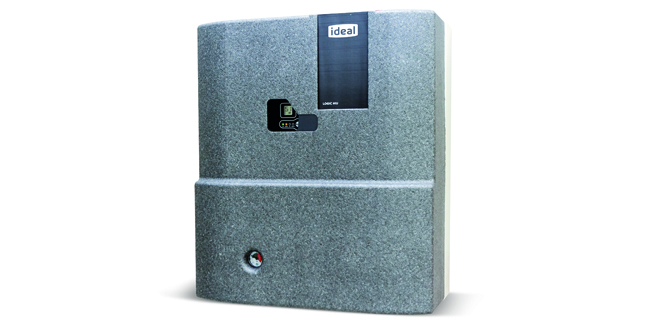The Heat Interface Unit (HIU) Market is poised for robust expansion, with an anticipated valuation of US$ 10.3 billion by 2032. Between 2022 and 2032, the market is projected to maintain a steady growth trajectory at a Compound Annual Growth Rate (CAGR) of 6.7%. In 2022, the global HIU market already demonstrated significant promise, recording a valuation of approximately US$ 5.4 billion.
Heat interface units, known for their exceptional energy efficiency, are designed to precisely regulate heat and hot water delivery to individual apartments based on occupants’ specific requirements. This not only ensures residents’ comfort but also minimizes energy wastage and excessive heating costs. The compact nature of HIUs is particularly advantageous in high-density housing developments, where space optimization is paramount. Developers can leverage HIUs to maximize living space within each apartment, a compelling selling point for potential buyers.
The cost-effectiveness of HIUs extends to installation and maintenance. These units can be swiftly and easily installed, and their remarkable reliability translates to minimal maintenance and repair needs. Furthermore, HIUs play a pivotal role in reducing carbon emissions and enhancing building sustainability. By incorporating renewable energy sources like heat pumps, developers can significantly curtail a building’s carbon footprint, aligning with growing environmental concerns.
Request a Sample of this Report @
https://www.futuremarketinsights.com/reports/sample/rep-gb-16896
Key Takeaways:
- The Heat Interface Unit Market is on a steady growth trajectory, projected to reach US$ 10.3 billion by 2032, with a CAGR of 6.7%.
- HIUs offer precise heat and hot water regulation, optimizing energy usage and enhancing resident comfort.
- Compact and cost-effective, HIUs are well-suited for high-density housing developments.
- Government initiatives and environmental concerns are driving market growth.
- Challenges include initial installation costs and the availability of renewable energy sources.
- Europe leads in HIU adoption, followed by North America and Asia-Pacific, each with its unique dynamics.
Drivers and Opportunities:
Several factors are driving the growth of the Heat Interface Unit Market. The increasing focus on energy efficiency and sustainability in construction projects is a primary driver. HIUs offer an effective means to reduce energy consumption and promote environmentally friendly practices. Additionally, the burgeoning demand for high-density housing, particularly in urban areas, is bolstering the market. HIUs’ space-saving design aligns perfectly with the needs of such developments.
Rising awareness of the benefits of HIUs among consumers is expected to fuel demand further. As occupants seek more control over their heating and hot water usage, HIUs provide an ideal solution. Furthermore, government initiatives and regulations aimed at reducing carbon emissions are incentivizing the adoption of HIUs in residential and commercial buildings.
The competitive landscape of the Heat Interface Unit Market is characterized by regional trends, with variations in adoption and preferences across different geographical areas. In Europe, for instance, HIUs have gained widespread acceptance due to their alignment with the region’s stringent energy efficiency standards. In North America and Asia-Pacific, market players are increasingly investing in research and development to cater to evolving customer needs.
Request for Methodology:
https://www.futuremarketinsights.com/request-report-methodology/rep-gb-16896
Restraints:
Despite the promising growth prospects, the Heat Interface Unit Market faces certain challenges. The initial cost of HIU installation can be a barrier for some builders and developers, particularly in emerging markets. Moreover, the market’s growth is contingent on the availability and affordability of renewable energy sources like heat pumps.
Region-wise Insights – Category-wise Insights:
- Europe: Europe dominates the HIU market, driven by stringent energy efficiency regulations and growing environmental consciousness. District heating systems are widely employed in this region, boosting HIU adoption.
- North America: North America is witnessing a gradual increase in HIU adoption, primarily due to the rising demand for sustainable building solutions. The market is also influenced by government incentives.
- Asia-Pacific: Asia-Pacific presents significant growth potential, with increasing urbanization and a burgeoning construction sector. The adoption of HIUs is expected to rise as awareness of energy efficiency grows.
Heat Interface Unit Market Outlook by Category
By Component:
- Pumps
- Sensors
- Valves
- Controllers
- Heat Exchangers
By Product:
- Indirect
- Direct
By Application:
- Commercial
- Industrial
- Residential
By Region:
- North America
- Latin America
- Europe
- Asia Pacific
- Middle East and Africa
About Future Market Insights (FMI)
Future Market Insights, Inc. (ESOMAR certified, recipient of the Stevie Award, and a member of the Greater New York Chamber of Commerce) offers profound insights into the driving factors that are boosting demand in the market. FMI stands as the leading global provider of market intelligence, advisory services, consulting, and events for the Packaging, Food and Beverage, Consumer Technology, Healthcare, Industrial, and Chemicals markets. With a vast team of over 5000 analysts worldwide, FMI provides global, regional, and local expertise on diverse domains and industry trends across more than 110 countries.
Contact Us:
Future Market Insights Inc.
Christiana Corporate, 200 Continental Drive,
Suite 401, Newark, Delaware – 19713, USA
T: +1-845-579-5705
For Sales Enquiries: sales@futuremarketinsights.com
Website: https://www.futuremarketinsights.com
LinkedIn| Twitter| Blogs | YouTube

